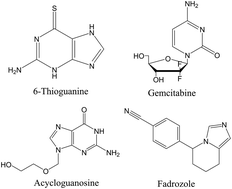Label-free Raman spectroscopy for accessing intracellular anticancer drug release on gold nanoparticles
Abstract
We investigated glutathione (GSH)-induced

* Corresponding authors
a
Department of Chemistry, Soongsil University, Seoul, Korea
E-mail:
sjoo@ssu.ac.kr
Fax: +82-2-820-0434
Tel: +82-2-820-0434
b
Laboratory of Pharmacology, College of Veterinary Medicine, Seoul National University, Seoul 151-742, Korea
E-mail:
leeso@snu.ac.kr
We investigated glutathione (GSH)-induced

 Please wait while we load your content...
Something went wrong. Try again?
Please wait while we load your content...
Something went wrong. Try again?
K. Ock, E. O. Ganbold, J. Park, K. Cho, S. Joo and S. Y. Lee, Analyst, 2012, 137, 2852 DOI: 10.1039/C2AN35170F
To request permission to reproduce material from this article, please go to the Copyright Clearance Center request page.
If you are an author contributing to an RSC publication, you do not need to request permission provided correct acknowledgement is given.
If you are the author of this article, you do not need to request permission to reproduce figures and diagrams provided correct acknowledgement is given. If you want to reproduce the whole article in a third-party publication (excluding your thesis/dissertation for which permission is not required) please go to the Copyright Clearance Center request page.
Read more about how to correctly acknowledge RSC content.
 Fetching data from CrossRef.
Fetching data from CrossRef.
This may take some time to load.
Loading related content
